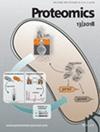Dynamic Proteome Landscape During Preimplantation Human Embryo Development and Trophectoderm Stem Cell-Differentiation
Abstract
Embryo development involves fertilization of a mature ovum, which, after sequential cell divisions (2-,4-8-cells and morula), undergoes differentiation into implantation competent blastocyst. The blastocyst comprises of inner cell mass surrounded by an outer layer of cells called the trophoblast (TSblast) that, upon attachment to the endometrium, differentiates into extravillous trophoblasts (EVTs) that facilitates embryo invasion into the endometrium for intrauterine embryo development, and syncytiotrophoblast (ST) that form the placenta. Such cellular differentiation stages are critical for embryogenesis and implantation, although the protein expression landscape remains poorly understood in humans. Using quantitative mass spectrometry analysis, we systematically monitored the protein expression landscape and their dynamic regulation between human ovum (M2), 8-cell embryo, and blastocysts stages, and trophoblast lineage-specific differentiation into EVTs and ST. Proteins temporally regulated from M2-8 cell-blastocyst stage displayed significant enrichment for metabolic protein networks. We specifically identified 156 proteins associated with 8-cell embryos to blastocyst development, 54 displayed similar correlation at the transcriptomic level including mitochondrial, junction/secretory granule-associated proteins that carry glycolytic, antioxidant, and telomerase maintenance functions. We reveal a striking lineage-specific reprogramming of TSblast proteome during fate-specification. These findings extend our knowledge of the sequential order of protein landscape reprogramming and processes during early human embryogenesis and trophoblast function.
Summary
- Although genomic and transcriptomic studies have provided key understanding of the genetic programs underlying preimplantation embryo development, the protein expression landscape remains unexplored. Here, a quantitative proteomic study of human preimplantation embryo stages reveal a dynamic proteome landscape from M2, 8-cell, and blastocyst stage, and during trophoblast stem cell (TS) differentiation.
- Identified key factors in early human embryos and lineage-specific trophoblast proteome profiles, further correlated with transcriptomic analyses.
- This direct proteomic analysis provides a quantitative and temporal analysis of the dynamic protein expression in human embryos during preimplantation development and a powerful resource to enable further mechanistic studies on human trophoblast development and function.




 求助内容:
求助内容: 应助结果提醒方式:
应助结果提醒方式:


